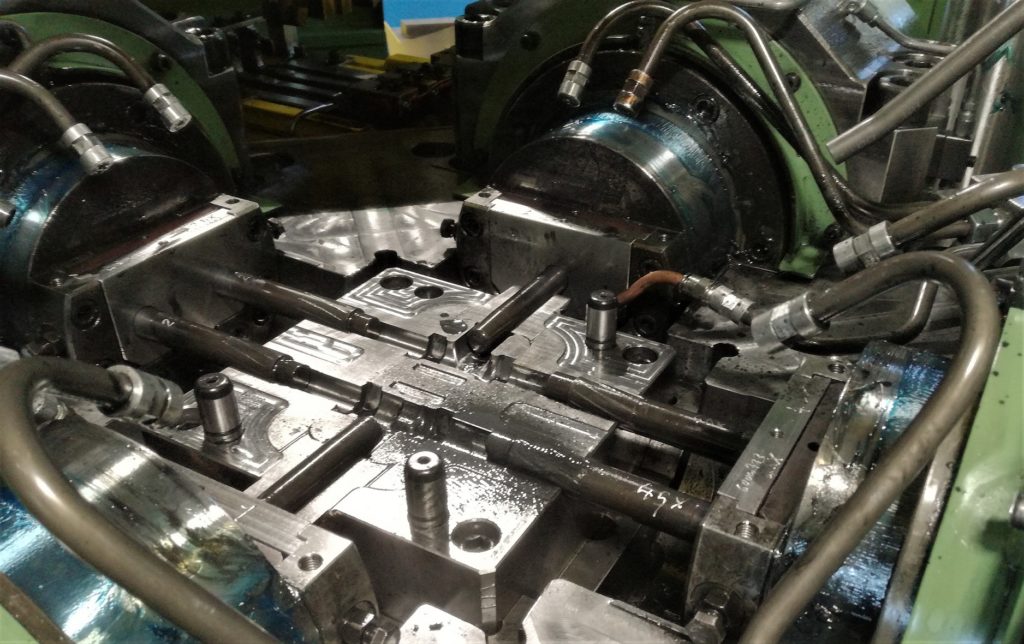
I THOUGHT IT WAS DIAMOND BUT IS…GRAPHITE!
The most curious thing to know regarding the graphite – one of the allotropy forms of carbon – is that it can be considered from the chemical point of view a diamond twin. But it is completely different for the physical features: first of all, it’s black! And, in addition, it has its own, very precious, application in the protection covering of metallic areas exposed to corrosion. Keep reading if you want to discover more about graphite and about graphitizing!
Graphite, a precious mineral for industry
To the touch it is unctuous and slippery, graphite has a metallic shining and a density between 2,09 and 2,2. Extremely soft (with a variable hardness between 1 and 2) it’s very easy to scratch. It solidifies in the hexagonal system, not in the shape of completely developed crystals, but in the shape of scales or irregular masses. It is the only not metal that is a good electricity conductor, on the contrary it conducts heat in a bad way.
It exists in nature as a mineral that includes impurities, it is amply supplied all over the world; important deposits are located in England, Siberia, Madagascar, Mexico, Sri Lanka, Canada and in many American places.
It is also artificially produced, warming up for 11-13 weeks at a temperature of 950 degrees Celsius a blend of petrol and carbon derivatives and then transferring the product of the cooking in electric furnace, where for 4-5 weeks it remains at the temperature of 2.800 degrees Celsius. Most of the process of graphitization (that is a warming at the temperature of 2500-3000 degrees Celsius) it happens not only for the temperature but also for a refinement caused by a reduction of metals and vaporization of metal oxides present in carbon.
What is graphite for?
Graphite is used for electrodes in the electrochemical industry, for electrical furnace or crucibles addressed to very high temperature, in industrial paints.
Moreover, it is used as lubricant (sometimes mixed with grease, oils or water) in a semi-permanent treatment that is called graphitizing and it is used in order to protect the metallic surfaces.
The graphitizing process
Graphite is a lubricant element and it can be available as powder or as paste. It guarantees the homogeneity of the superficial color of the billet. In addition, it produces a positive effect on gas consumption for the heating of brass or aluminum billets because, by making them black, it facilitates the heat absorption.
As it is lubricant, regarding the mold it contrasts efficiently:
- Consumption
- Wearing out
Furthermore, it avoids that the billets stick one to another in the push-type gas furnace. It is a widely used process in Italy and less in other countries that, though, is not always recommended (for example in the case of products subjected to chrome plating).
For aluminum is interesting the treatment realized with not black graphite but of silver color. This coloring minimizes the visibility of possible dark spots on the pieces.
Graphitizing and working of metals
The graphitizing machines are essentially rotating drums, where the pieces of cut bar are inserted, to which some grams of graphite are added. During the necessary time of rolling, the graphite powder is homogeneously distributed on all the pieces, facilitating the next stage of the hot forging.
The goals of lubrication, during the working of metals are complexes. The reasons we interpose lubricating material between the basic material to be worked and the tools or die that produce the deformation can be summarized in:
- Friction reduction;
- Use reduction;
- Surface aspect;
- Temperature control;
- Form changing control;
- Distribution control of the stresses in the product.
Regarding the surface aspect, thanks to their properties to avoid the contact between metals, lubricants can prevent the developing of marked and poor-quality surfaces on the product. But simply producing a not damaged surface could be not enough because a bright, reflecting or matt aspect can be required. In that sense, the lubricant used makes a significant difference.
Graphite is confirmed the real classic lubricant in solid film. It sticks well to the metallic surfaces and, for that reason, it is usually used for the pre-treatment of the tools and dies, as an additive for other lubricant at room temperature and, in particular, as lubricant for high temperature operations. The disadvantage is that graphite is not easy to remove once the working is finalized.
For some types of processes and materials to be worked, the choice of each kind of lubricant it’s in many cases very easy, but the real choice of a specific lubricant – best composition and condition for the use – it is not. In the operative reality we have to take into consideration so many factors (the available equipment, the tonnage produced, the range of products to be manufactured with a certain equipment, pre -and -post working treatments) so that each lubrication problem can be treated in a specific way. So it is better to get to the final lubricant choice only after a careful evaluation of the application.
